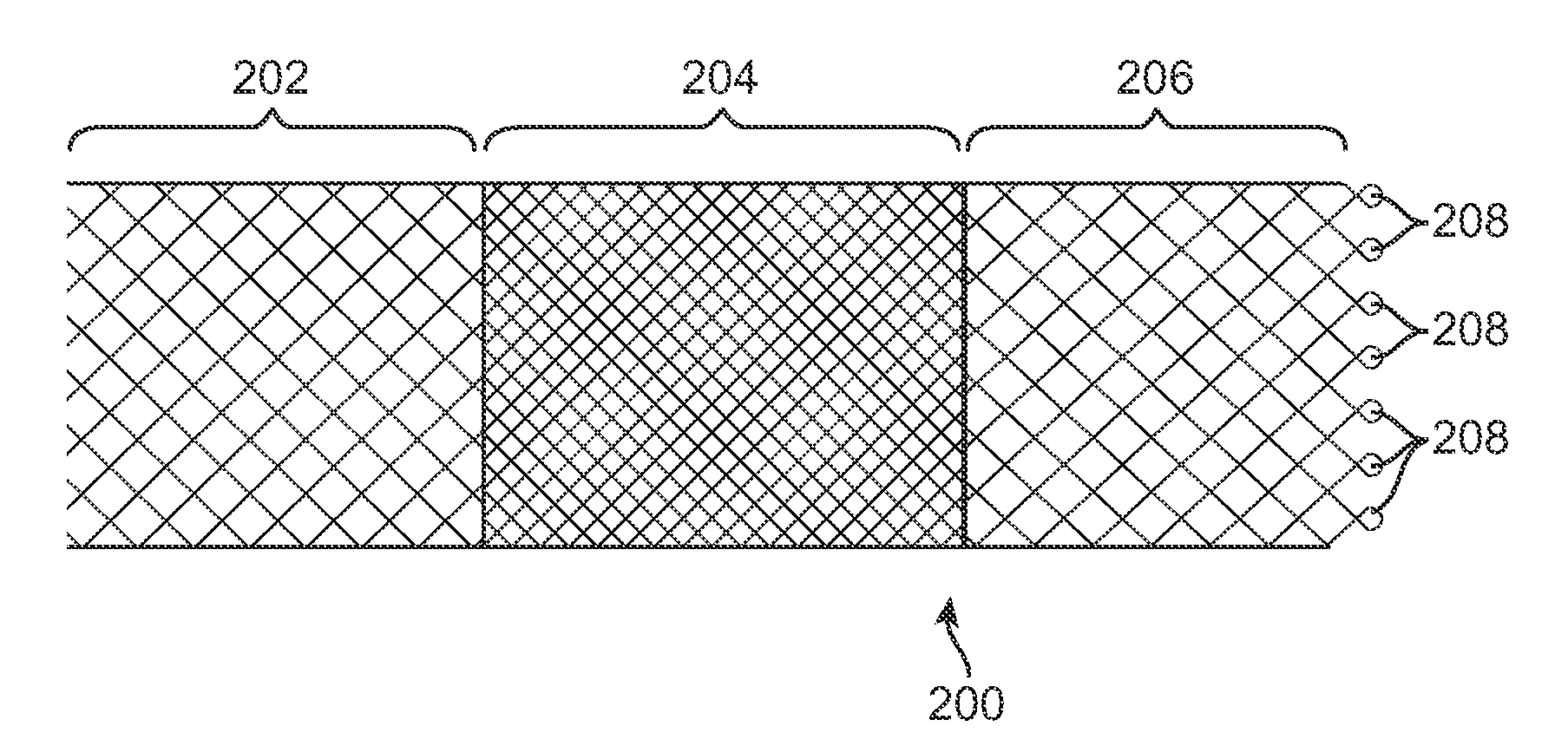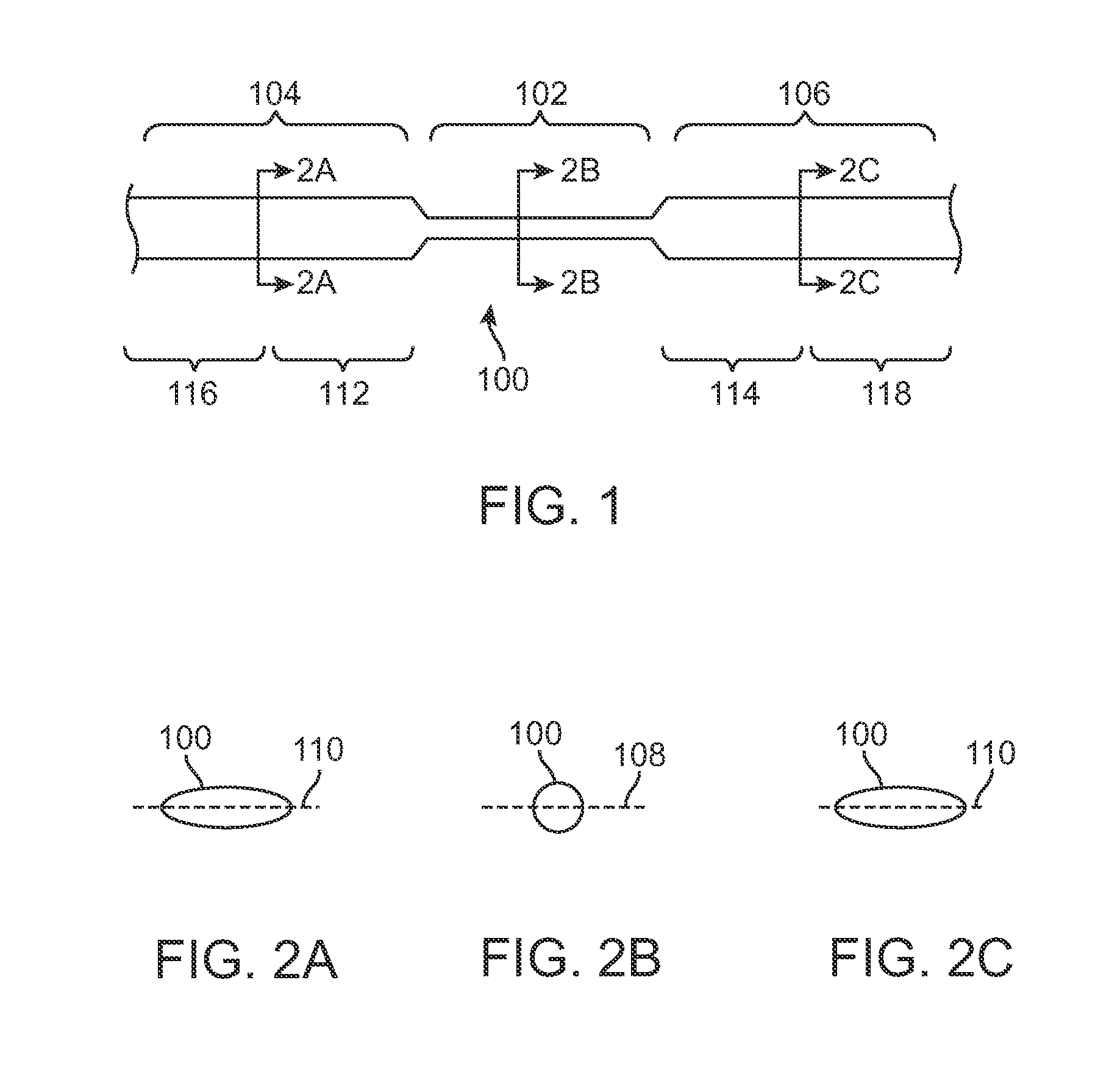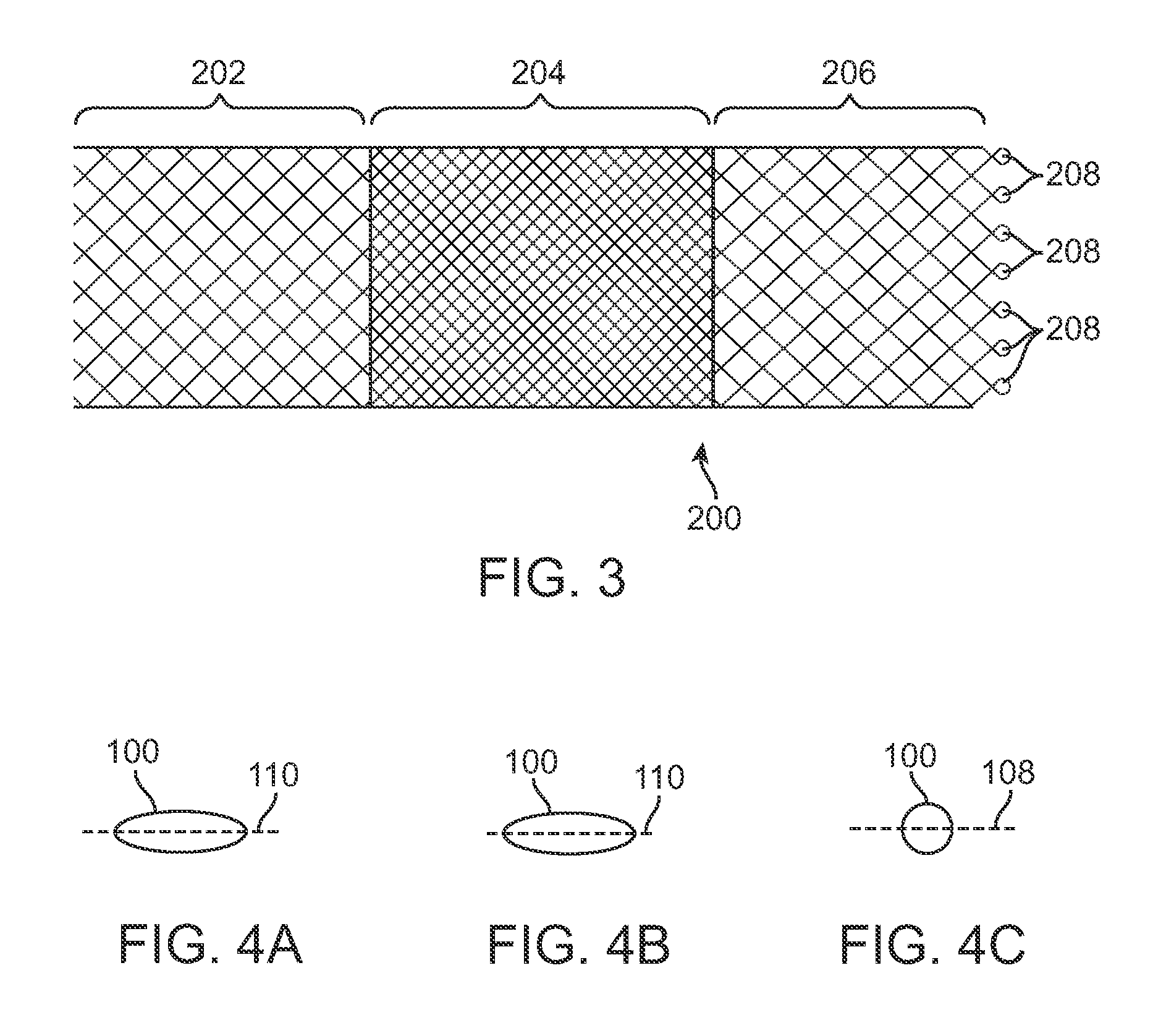Stent with variable cross section braiding filament and method for making same
- Summary
- Abstract
- Description
- Claims
- Application Information
AI Technical Summary
Benefits of technology
Problems solved by technology
Method used
Image
Examples
Embodiment Construction
[0030]FIG. 1 illustrates a stent filament 100 according to an embodiment of the invention. The filament 100 may be formed from both metallic and non-metallic materials.
[0031]Metallic filament materials include, without limitation, nitinol, stainless steel, cobalt-based alloy such as Elgiloy, platinum, gold, titanium, tantalum, niobium, and combinations thereof and other biocompatible materials, as well as polymeric materials. The filament 100 or zones thereof may have an inner core of tantalum, gold, platinum, iridium or combinations thereof and an outer member or layer of nitinol to provide a composite filament for improved radiopacity or visibility. Non-metallic materials include, without limitation, polyesters, such as polyethylene terephthalate (PET) polyesters, polypropylenes, polyethylenes, polyurethanes, polyolefins, polyvinyls, polymethylacetates, polyamides, naphthalane dicarboxylene derivatives, natural silk, and polytetrafluoroethylenes. Non-metallic materials also includ...
PUM
 Login to View More
Login to View More Abstract
Description
Claims
Application Information
 Login to View More
Login to View More - R&D
- Intellectual Property
- Life Sciences
- Materials
- Tech Scout
- Unparalleled Data Quality
- Higher Quality Content
- 60% Fewer Hallucinations
Browse by: Latest US Patents, China's latest patents, Technical Efficacy Thesaurus, Application Domain, Technology Topic, Popular Technical Reports.
© 2025 PatSnap. All rights reserved.Legal|Privacy policy|Modern Slavery Act Transparency Statement|Sitemap|About US| Contact US: help@patsnap.com



